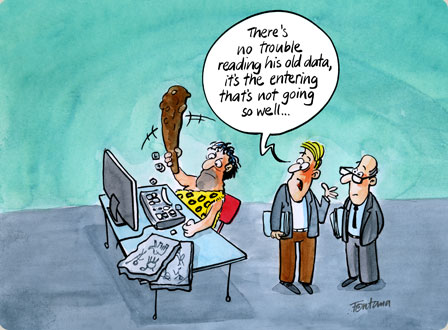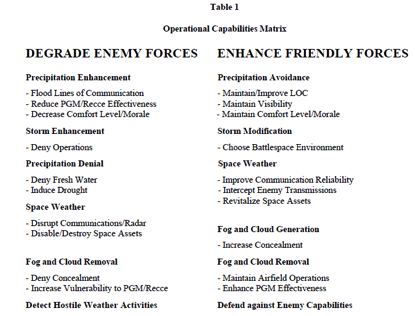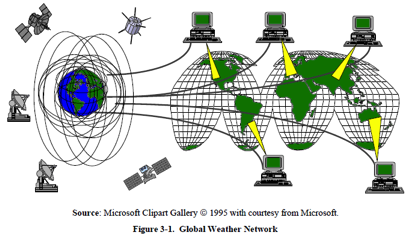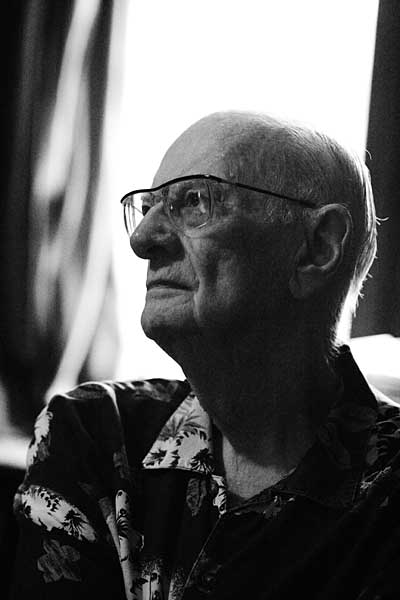
By Rahnuma Ahmed
?I am worried about this word, this notion ? security. I see this word, hear this word, feel this word everywhere. Security check. Security watch. Security clearance. Why has all this focus on security made me feel so much more insecure??
? Eve Ensler, ?Insecure at Last: A Political Memoir.?
Tailor-made, to suit your needs
Surveillance often works innocuously. Consider this: billboards equipped with small cameras that gather details about passers-by ? gender, a rough estimation of age, and how long she or he looks at the billboard. The cameras, it is said, use software to establish that the person is a billboard-viewer, it then analyses her or his facial features like cheekbone height, distance between nose and chin, to judge the person?s gender and age. Race is not used as a parameter. Not yet, but the companies say that they can, that they will. These details are transmitted to a central database. The purpose is to ?tailor? a digital display of the viewer, ?to show one advertisement to a middle-aged white woman,? and another to ?a teenage Asian boy.? To sell products more efficiently. More rationally. It does not intrude on privacy, so the argument goes, since actual images of billboard viewers are not stored.
These billboards are similar to websites such as Amazon, described as the largest (virtual) bookstore in the world, tailor-made to assist the customer, her needs and interests. I visit the website to look up books on feminist theory, I am shown bell hooks? Feminist Theory: From Margin to Centre, along with, Ain?t I a Woman: Black Women and Feminism, also written by her, one that is, so I am told, ?Frequently Bought Together.? Simultaneously, five other products are displayed, that Customers Who Bought This Item Also Bought. Down below are menus which, at a click, will display my Recent History, books recently purchased, or viewed by me.
The Surveillance Society
Surveillance, as a growing number of Western writers, journalists, artists, academics and human rights activists keep reminding us, is no longer ?the future?. In the words of Henry Potter, London editor of Vanity Fair, ?we are already at the gates of the surveillance society.? According to a group of academics, writers of A Report on the Surveillance Society (September 2006), it exists ?not merely from dawn to dusk,? but for twentyfour hours a day, seven days a week. It is systemic, expressed not only through supermarket check-out clerks who want to see loyalty cards, or the coded access card that allows one to enter the office, or CCTV (closed-circuit TV) cameras, which in Britain, are ?everywhere.? A CCTV consulting firm puts the number deployed at more than 4 million, nearly as many as the rest of the world combined, minus the United States. The report?s authors write, ?these systems represent a basic, complex infrastructure which assumes that gathering and processing personal data is vital to contemporary living.? Surveillance is,?in their words, a ?part of the fabric of daily life.?
They write, it would be a mistake to think of surveillance as ?something sinister, smacking of dictators and totalitarianism,? or as ?a covert conspiracy.? Instead, it is the outcome of modern organisational practices, business, government and the military. It is better viewed as the progress towards efficient administration, as a benefit for the development of Western capitalism and the modern nation-state. Four hundred years ago, rational methods began to be applied to organisational practices, to ensure that the new organisations ran smoothly. It made informal social controls on business and governing, and people?s ordinary social ties ?irrelevant.? The growth of new computer systems after World War II reduced labour intensity, it increased the reliability and the volume of work that could be accomplished. Subsequent growth of the new communications system, now known together as ?information technology? (IT), is related to modern desires for efficiency, speed, control and coordination, and is global.
Capitalism?s push to cut down on costs and to increase profits has accelerated and reinforced surveillance. This, accompanied by the 20th century?s growth of military and police departments, and the development of new technologies, has improved techniques of intelligence-gathering, identification and tracking. Surveillance thus, has become part of being modern.
It is undoubtedly two-sided. It has its benefits: it helps deter traffic violations, tracks down criminals, medical surveillance programmes provide necessary information to public health authorities etc. But, the authors warn us, there are things that are ?seriously wrong? with a surveillance society. Large scale technological infrastructures suffer from problems, equally large in scale, especially computer systems where a mistaken, or an imprudent keystroke can cause havoc. For instance, twenty million ordinary peoples? online search queries from AOL were released for ?research? purposes in August 2006. The names of identifiers were not tagged, but connecting search records with names took only a couple of minutes. Corruptions and skewed visions of power, not that of tyrants, but of leaders justifying extraordinary tactics in exceptional cicumstances, such as the endless ?war on terror,? can be disastrous. Many Muslim Americans have been branded as unfit for travel, or subject to racial profiling. Surveillance systems are wrong on three other counts: they are `meant to discriminate between one group and another?, as recent trends show, distinctions of class, race, gender, geography and citizenship are being exacerbated and institutionalised. Second, it undermines trust, something necessary to social relationships, breeding suspicion in its place. When parents start to use webcams and GPS systems to check on teenage childrens? activities, or spouses check each others? suspected infidelities, it speaks of a ?slow social suicide.? And third, surveillance systems associated with high technology and anti-terrorism distract us from pursuing ?alternatives,? from paying attention to larger and more urgent questions.
Fear internalised
Caroline Osella, a contributor to the ASA (Association of Social Anthropologists) blog discussion on recruiting anthropologists in the ?war on terror? (through the Human Terrain System programme), wrote of a personal experience that illustrates the ?state of paranoid anxiety? that grips people. As the mother of an 11 year-old, she had gone to a school meeting for parents to discuss a planned residential adventure school trip. She was astounded, she writes, to see parents not asking questions about activities planned, or practicalities like food, or other stuff to take along. Instead, questions revolved exclusively around security. School authorities were asked: ?will an adult stay awake all night to monitor that kids are safe and not wandering?,? ?can the kids escape to the outside?,? ?can strangers get in?? And she writes, incredible as it may sound, one father finally asked, ?what guarantee can the school provide that paedophiles will not be able to break the perimeter fence and get into the site, where the kids will be sleeping unchaperoned in tents??
It was surreal, Osella writes, to sit and listen to ?reasoned and careful discussions? of a totally fantastic scenario. It would be great, she says, to embrace some insecurity and uncertainty, and to accept the absence of ?total control? over our lives.
How does surveillance get naturalised? Mark Andrejevic, author of Reality TV: The Work of Being Watched, believes that reality TV has played a part in transforming American attitudes toward surveillance. Producers of early reality programs such as MTV?s The Real World (1992) had a hard time finding people willing to have their lives taped nearly 24 hours a day for several months. Now, thousands of young people form audition lines in college towns, ?more people applying to The Real World each year than to Harvard.? New generations, Andrejevic says, are growing up viewing television shows that let anyone see the lives of others recorded voluntarily. There are other reality shows too, like COPS, where police chases of criminals is filmed. Increasingly, he says, the results of surveillance are seen as `entertainment,? as being within the realm of the public?s right to know.
The mass collection of DNA data, and ?policy? laundering
The introduction of the Serious Organised Crime and Police Act 2005 in the UK has led to anyone being arrested on ?suspicion? of committing the slightest offence. After arrest, the police remove a DNA sample, which stays on the police database, even though the person may not be charged. Increasing by 40,000 samples per month, the database has surpassed more than 3 million DNA samples, a fifth of which belong to people of African-Caribbean origin. Who owns these DNA samples? ?Once a database like this is established, the authority concerned tends to regard the information as being in its ownership, to be exchanged without reference to the subjects,? writes Potter. The British government admitted that it had passed more than 500 DNA samples (I wonder whose, Arabs? Muslims?) to foreign agencies. But when asked to which countries, ?no one seemed to know.? The chairman of the Nuffield Bioethics Committee, Sir Bob Hepple anxiously commented, ?We didn?t have any legislation to establish the DNA database and it has not been debated in parliament.?
Western governments, it seems are devising new strategies to circumvent traditional ideals of civic liberty, based on notions of freedom and privacy (mind you, not in its colonies). Dr Gus Hosein, senior fellow with Privacy International says, ?illiberal policies? are pushed through international treaty organisations. The British government brought into effect communications surveillance policies through the European Union, and ID cards through the United Nations. ?The government returns home to Parliament, holding their hands up saying ?We are obliged to act because of international obligations? and gets what they want with little debate.? It is a strategy that has led to the coinage of new words: ?policy laundering.?
Having originated in the West, these surveillance systems are gradually extending outside it, to control, regulate and limit the lives of people in non-Western countries.
First published in The New Age on 15th September 2008








